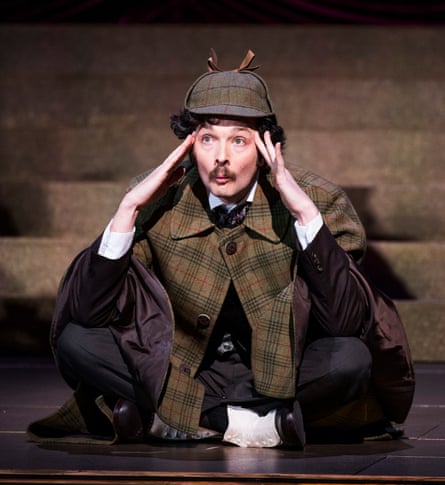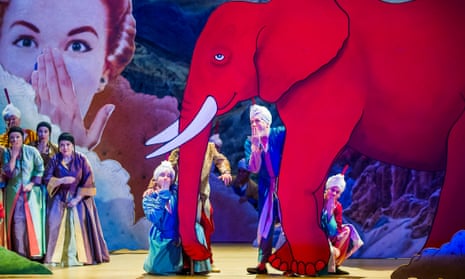“It is fatal to be boring,” Emmanuel Chabrier once remarked. L’Étoile, receiving its belated Covent Garden premiere, was the work that put him on the musical map at its Paris premiere in 1877. It’s one of the finest of opéras bouffes, witty, sexy and delightfully written, so it’s a shame that the Royal Opera’s production, directed by Mariame Clément and conducted by Mark Elder, doesn’t always do it justice.
The piece glances at the arbitrary whims of monarchy and the machinations of diplomacy. The pedlar Lazuli fancies the princess Laoula, the intended bride of King Ouf the First. Like Gilbert and Sullivan’s Mikado, Ouf has a penchant for executions, and thinks Lazuli would make a promising victim. Laoula’s entourage, meanwhile, includes the inane ambassador Hérisson and his wife Aloès, who is having an affair with his secretary Tapioca. Astrology (Ouf is under the thumb of the stargazer Siroco) is integral to the plot, as is green chartreuse, its properties celebrated in one of Chabrier’s best numbers.
Some have seen the work as prefiguring surrealism, which is Clément’s cue to turn the piece into an extravagant, postmodern fantasy with overtones of a Monty Python cartoon. The end result, however, is curiously lacking in focus. Julia Hansen’s designs are a jumble of medieval Persian painting, Victorian dress and interiors, and 1950s fashion. Siroco (Simon Bailey) looks like Nostradamus. At one point, Laoula (Hélène Guilmette) and Aloès (Julie Boulianne) slum it as shop girls in Émile Zola’s fictional department store Au Bonheur des Dames.

Two extra characters are introduced, the Englishman Smith (comedian Chris Addison) and the Frenchman Dupont (Jean-Luc Vincent), whose choric comments and interventions, though not really necessary, prove entertaining. But all too frequently, Clément’s humour misfires. Chabrier’s raunchy trio on the pleasures of tickling goes for nothing when there’s no tickling going on on stage. The whole thing isn’t as funny as it could have been, and would perhaps have worked better played comparatively straight.
But at least we have the score, which is a gem, and it’s finely sung. Christophe Mortagne makes an engaging Ouf, and the chartreuse duet with Bailey is delightfully done. Boulianne and Aimery Lefèvre’s Tapioca look and sound good together. Guilmette can be exquisite, though Kate Lindsey’s Lazuli hasn’t quite got the tangy lower registers that the role ideally requires. Elder, celebrating the 40th anniversary of his Royal Opera debut, conducts with bags of style and panache. It’s worth hearing, whatever you think of the staging.

Comments (…)
Sign in or create your Guardian account to join the discussion